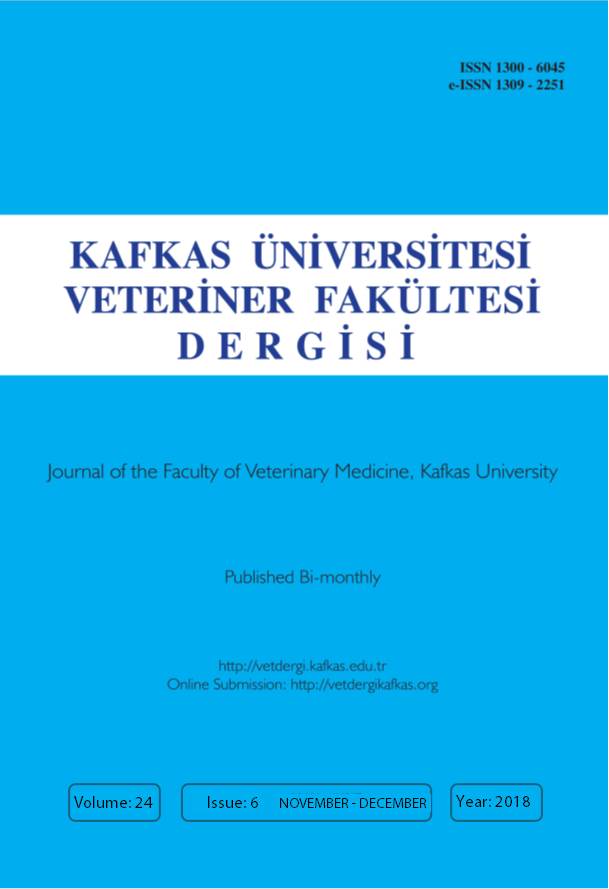
This journal is licensed under a Creative Commons Attribution-NonCommercial 4.0 International License
Kafkas Üniversitesi Veteriner Fakültesi Dergisi
2018 , Vol 24 , Issue 6
Preliminary Study on Association of EDNRB Gene with Heterochromia Iridis in Cats (Felis catus)
1Department of Biology, Faculty of Science, Chiang Mai University, Chiang Mai 50200, THAILAND2Center of Excellence in Veterinary Bioscience, Chiang Mai University, Chiang Mai 50200, THAILAND
3Department of Biology, Faculty of Science, Naresuan University, Phitsanulok 65000, THAILAND
4Science and Technology Research Institute, Chiang Mai University, Chiang Mai 50200, THAILAND
5Department of Veterinary Biosciences and Veterinary Public Health, Faculty of Veterinary Medicine, Chiang Mai University, Chiang Mai 50100, THAILAND
6Department of Companion Animal and Wildlife Clinic, Faculty of Veterinary Medicine, Chiang Mai University, Chiang Mai 50100, THAILAND DOI : 10.9775/kvfd.2018.20082 This study conducted an investigation on three exons of the endothelin receptor type B (EDNRB) gene of Thai odd-eyed cats to find out the association between the variations in the gene and heterochromia iridis. DNA sequencing analysis was performed on 11 odd-eyed cats compared to 11 normal-eyed cats. Seven variations were found across the studied region (XM_003980457.2: c.610A>G, c.820+40C>T, c.821-14C>T, c.916A>G, c.1025+36G>T, c.1025+69A>T, and c.1025+138C>T) with two of them (c.610A>G and c.916A>G) causing amino acid changes (P.Asn128Ser and P.Val230Ala). There was no statistical association between the variations near the three exons of EDNRB and feline heterochromia iridis (chi-square test, P-value >0.05). Keywords : EDNRB, Heterochromia iridis, Odd-eyed cat, SNPs, Sequencing










